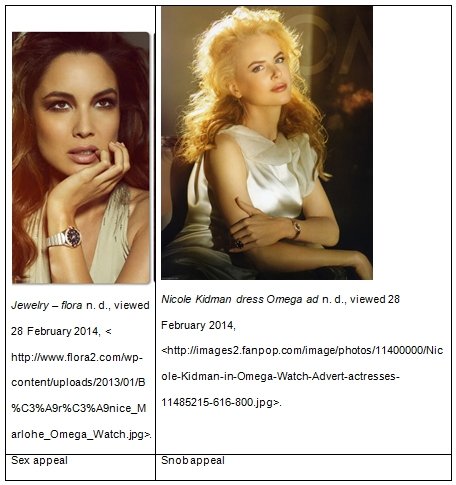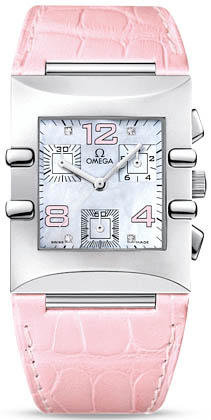Omega Company’s History
Founded in 1848 in Switzerland, Omega SA was known as a small company selling watches assembled from parts obtained from local craftsmen. After the founder’s two sons took the management of the company and adopted an in-house manufacturing approach that was aimed to meet customer needs, things changed radically for Omega. The company merged with Tissot in 1930 to form SSIH that was based in Geneva.
At around 1970s, the group that specialised in luxury watches was the largest in Switzerland and the third largest globally. The watches marketed by the Rolex Company were the main competitors of the Omega watches, but sold its products at higher prices (Tam, Fu & Du 2007).
The emergence of Seiko and Citizen watches that used the quartz technology changed operations of Omega Company. Thus, the firm designed watches to compete effectively with the new market entrants. However, Rolex watches still had expensive mechanical parts (Tam, Fu & Du 2007).
Advertisements Analysis
It will not take long even an inexperienced customer to notice the common patterns in the way that Omega promotes its brands. First and foremost, the use of similar words indicates that Omega aims at cementing its brands in people’s minds. While the company uses a traditional advertisement vocabulary, it also features a number of unique elements, such as “authentic” (Omega DeVille Ladymatic Watches 2013); moreover, the word “enigmatic” is obviously coded in the name “Ladymatic.”
The advertisements are obviously aimed at informing the customers rather than amusing them. In addition, the company avoids including any bits of information that may possibly be misleading. While the given strategy may seem a bit boring, it clearly pays off, seeing how Omega has gained impressively good reputation among its target audience over the past few years.
Advertisement Campaigns
Each of Omega’s advertisement campaigns actually has a number of distinct signifiers of social values, such as a new image of a woman as an independent, strong, popular (shape: angular) and attractive (colors: pastel, gold, platinum) person. There is a bit of sex appeal in each of the commercials; however, the focus is still on the sex appeal rather than on snob appeal:

While the given choice is rather questionable, it still shows that Omega is following a rather beaten yet safe track. The target customers project the images used in the advertisements onto themselves and, thus, consume the product, being sure that wearing Omega watches will turn them sexy and popular as well (Silvera & Austad 2004).
Brands Analysis
Casting a single glance at the variety of Omega’s brands is enough to notice a common thread with each of them. Although Omega positions itself as a company with a unique approach towards the solution for any brand, the company clearly tries to keep its signature elements in their places, especially when it comes to designing watches for women.
The first element that falls into the eye of a typical customer, Omega’s tendency to use a bi- or tricolor palette for women watches chimes in with the overall reserved and tasteful design.
As the recent advertisement with Nicole Kidman featuring Omega Ladymatic shows, the company tends to include noble metals into the range of its materials for women’s watches, yet still retains its restraint in terms of the color cast. The combination of gold and steel looks truly gorgeous, creating a fantastic mixture of elegance and strength, thus, contributing the evolution of an image of a XXI century woman.

Omega 2014, Ladymatic.
Another brand of Omega’s watches for women, though strikingly different from Ladymatic, shares a couple of key features with the latter. Omega Seamaster is also represented in the same bicolor palette, though the legend behind the model is quite different.

Omega 2013, Omega Constellation Seamaster.
Another peculiar specimen of Omega’s experiments with its brand image and the target customers’ expectations, Omega Constellation Quadra was a very daring step for the company at the time. Despite the fact that glamorousness seemed to be slowly turning out of fashion, Omega took the risks and produced Quadra. Also featuring Omega’s restraint in terms of the choice of color, this brand allowed making the image of a XXI century woman more flexible, leaving some room for impulsivity, light-mindedness and fun.

Omega 2013, Omega Constellation Quadra.
Omega’s Sustainability
The advertising strategies adopted by Rolex and Omega companies are sustainable. The approaches could make many customers buy watches from the two companies. The purchases would result in improved financial performances that would sustain advertisements and other business activities undertaken by the firms (Rossiter & Smidts 2012).
Omega’s Appeal
The advertisements contribute to the image of the products marketed by the two firms. Omega ads make an appeal to female buyers because they associate female celebrities with classic watches. On the other hand, advertisements of the Rolex Company promote the appeal of the watches by using attractive and expensive mechanical parts.
Reference List
Jewelry – floran. d. Web.
Nicole Kidman dress Omega ad n. d. Web.
Omega 2013, Omega Constellation Seamaster. Web.
Omega 2013, Omega Constellation Quadra. Web.
Omega 2014, Ladymatic. Web.
Omega DeVille Ladymatic Watches 2013. Web.
Rossiter, J R & Smidts, A 2012, ‘Print advertising: celebrity presenters’, Journal of Business Research, vol. 65, no. 6, pp. 874-879.
Silvera, D H & Austad, B 2004, ‘Factors predicting the effectiveness of celebrity endorsement advertisements’, European Journal of marketing, vol. 38, no. 11, pp. 1509-1526.
Tam, LC, Fu, Y & Du, R 2007, ‘Virtual library of mechanical watch movements’, Computer-Aided Design and Applications, Vol. 4, No. 1, pp. 127-136.